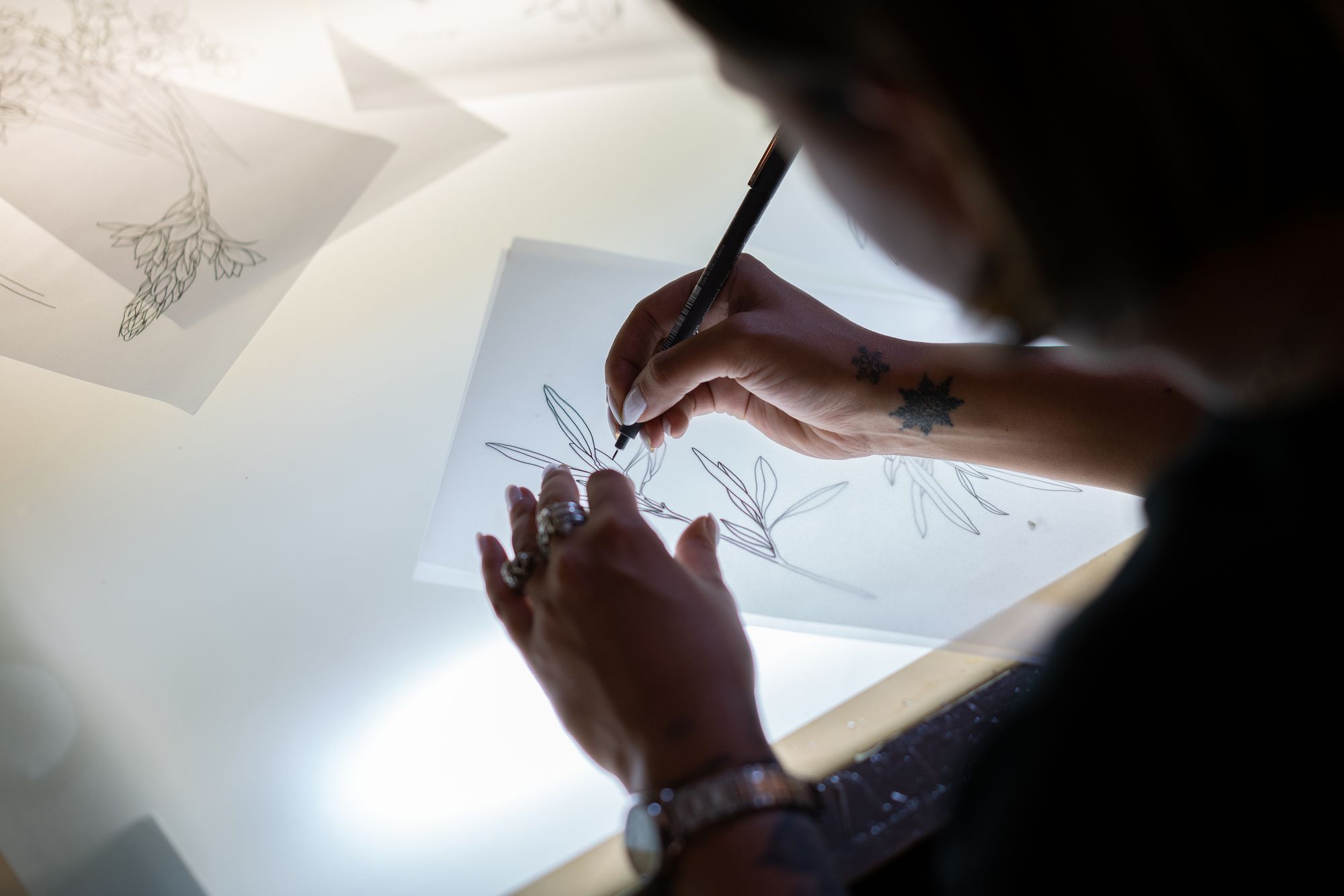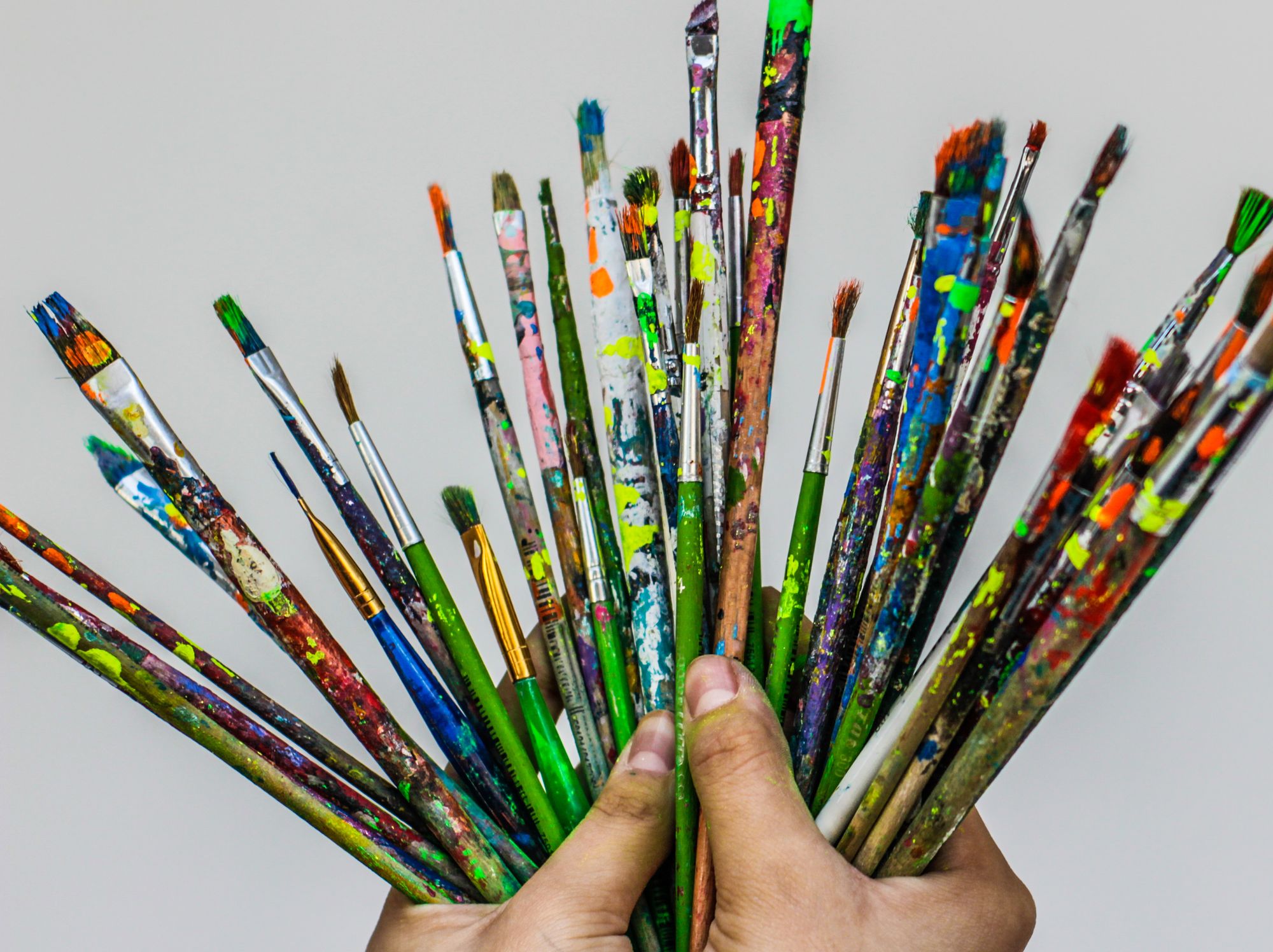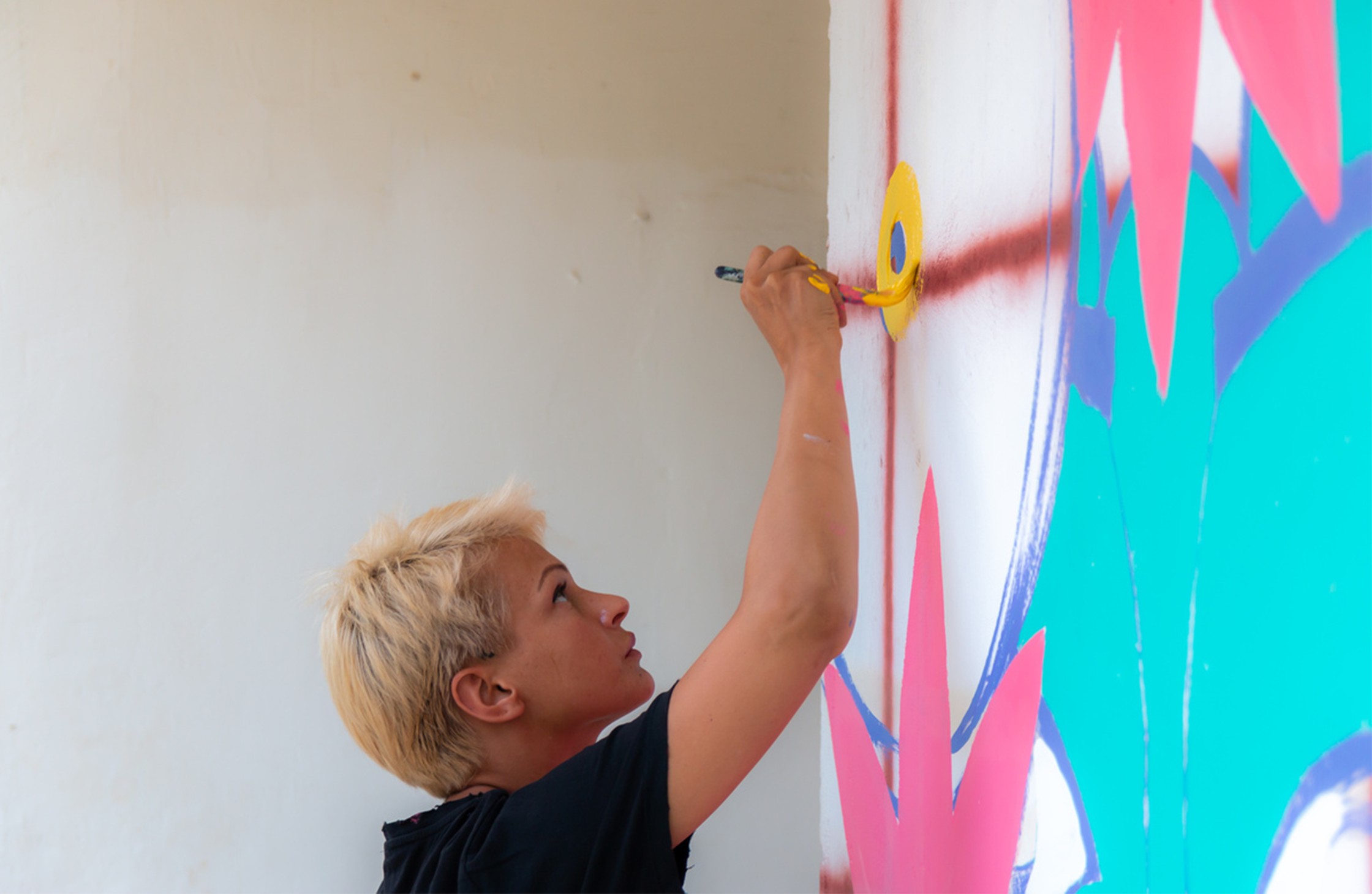If you were asked to name five famous artists, what is the likelihood that your list would include a woman? Most individuals are not familiar with the work of modern day or historical women and nonbinary artists. A data analysis of eighteen major U.S. art museums found that 87% of featured artists are men, and 85% are white. H.W Hansen’s survey “Basic History of Western Art” reports that only 28 of the 318 artists detailed are women, and only four commercial galleries in New York City show the art of Black women (and only one shows art from more than one Black woman).
Is this discrepancy because women are simply not good at making art? Or are there structural inequalities which create barriers for female artists? Research suggests that socially constructed gender roles have created a mountain of barriers which make it nearly impossible for women to be heard over the thundering voices of the wealthy, powerful, predominantly white, male base that rules the art world. Art plays a crucial role in society by recording and shaping our collective memory, values, and voice. The way people, places, things, and events are recorded through art influences the way they are viewed by society. Conversely, the social constructs of gender, race, class, and sexuality shape how art is valued, as well as what art is being sold and viewed by the public.
The lack of feminine voices in the art world, and the stories told through the narrow, white, male lens perpetuates harmful stereotypes, and enables the persistence of structural inequality and discrimination. But in order to combat the harm caused by lack of representation in the art world, we must first address the systems perpetuating the persistent barriers to equal representation. Barriers we must address include the systemic exclusion of women and nonbinary people from art history, as well as from museums and galleries, along with a failure to recognize social constructs which block these artists from entry into the art world. Some of the social constructs contributing to these barriers include the constructs of class and gender, and the institution of family.
In January of 1971, Linda Nochlin’s groundbreaking essay “Why Have There Been No Great Women Artists” challenged the field of art history to look beyond eliciting appreciation for forgotten or overlooked women artists from history, and instead move to examine the systems driving and directing art production, art history, and the art world. Nochlin believed simply asserting that there had in fact been many great women artists who were not appreciated — or recognized properly — bypassed a crucial appraisal of the art world’s patriarchal value system and the social constructs which uphold them. Nochlin said:
“In actuality, as we all know, things as they are and as they have been, in the arts as in a hundred other areas, are stultifying, oppressive, and discouraging to all those, women among them, who did not have the good fortune to be born white, preferably middle class, and above all, male. The fault lies not in our stars, our hormones, our menstrual cycles, or our empty internal spaces, but in our institutions and our education.”
To begin examining our institutions and surmising the ways in which those systems create and uphold inequalities in the art world, we must start with a look at how the value of art is established, both in history and today. Historically, the deciders of which artists would have success and what art would be revered as ‘great’ were wealthy patrons and leaders of the church and government. Most artists in ancient Greece — as well as the Middle Ages and the Renaissance — who were successful owed their success to the wealthy, influential patrons who commissioned them for public projects or art — to adorn their homes, to honor their accomplishments, or to bring recognition to their gods and leaders. Who might those wealthy patrons be? White men, of course! Let us not forget: for centuries, women were not allowed to read or write, and were considered the property of the men in their lives — their husbands and fathers. Women were certainly not commissioning public works of art, nor were they allowed to receive commissions.
Today the same sentiment holds true, though the laws and customs have changed. Women today may legally be able to vote, own property, and earn degrees; however, even though women make up a large portion of art museum staff, they are still missing from most leadership roles. Less than half of museum directors are women, and museum budgets are directly proportional to whether the director is a man or woman; most museums with a budget of over 15 million have men as their directors. The curators, collectors, and directors of today set the standards for what is considered desirable art, as the patrons of ancient Greece did. Sadly, even women and nonbinary curators and museum and gallery directors are subject to ranking work from the viewpoint of an internalized patriarchal value scale. In the December 2014 issue of Vanity Fair, a survey of the top fourteen women art dealers found that all but one of them represented less than 33% non-male artists.

With the knowledge that most of the influential gatekeepers and tastemakers of the ‘Art World’ are wealthy white men, we must examine how the constructs of gender, race, and class intersect to determine what is valued as ‘high’ and desirable fine art. The most expensive piece ever sold by a woman artist at auction was Georgia O'Keeffe's Jimson Weed/White Flower no. 1, which sold in 2014 for 44.4 million — 400 million dollars less than the most expensive work sold by a male artist. The record for the most expensive work sold by a living woman artist was Propped by Jenny Saville, which sold for 12.4 million in 2018. Compare that to the 91.1 million dollar record of a Jeff Koons piece sold in 2019. These statistics alone tell us that art made by women is not deemed as ‘valuable’ as art made by men.
Evidence collected by researchers for “Is Gender in the Eye of the Beholder? Identifying Cultural Attitudes with Art Auction Prices” suggests that there is roughly a 47.6 percent discount for art created by women in auctions, and that this discrepancy is “higher in countries with greater gender inequality.” The study also found that participants could not guess the gender of an artist by the work alone, nor did their taste reflect a trend regarding the artist's gender; the difference in which art was more highly regarded only appeared when the gender of the artist was known. The researchers make the assertion that this suggests women’s art sells for less because it is made by women.
Another perspective in the same study suggests that “since art can reflect personal experience, one might argue that the themes and styles in women’s art are simply less appealing to big spending collectors — the bulk of whom are men.” In ancient Greece, this meant that the hero statues and massive architectural undertakings to honor the gods were valued above the textile works created by women. In the 17th and 18th Century, the subjects of war and gods were revered above the still lifes and portraiture that women artists, relegated to the home, were focused on. In the 19th century, the subject of the male gaze turned to the women’s naked form, while women artists still struggled to be taken seriously.
The idea of ‘feminine’ content being deemed less valuable extends to materials and processes typically considered to be feminine, as well. In “The Distinction Between Art and Craft”, researcher Sally Markowitz says, “The difference in evaluative meaning reflects our culture’s elitist values: what White European men make is dignified with the label ‘art’, while what everyone else makes only counts as ‘craft’. Further, the article suggests that the social class of the artists alone might be a determining factor for whether their work is considered ‘art’ or ‘craft’. The success of artist Mary Cassat is evidence of this theory. Though Cassat’s art showed women engaged in work, not as passive models for the male gaze to enjoy — which was radical content for the 19th century — her art was respected by the male dominated field of impressionists. This may be due to the fact that though her gender was not in her favor, she was wealthy and white, both of which worked in her favor. Not only did her fortune afford her private art instruction, and the luxury of not having to rely on her art to make a living, it elevated her social status. In Markowitz’ study, one art critic, upon being introduced to an exhibition of blankets created by a Navajo woman, said:
“I am going to forget, in order to really see them, that a group of Navajo blankets are only that. In order to consider them as I feel they ought to be considered — as art with a capital ‘A’ — I am going to look at them as paintings — created with dye instead of pigments, on unstretched fabric instead of canvas — by several nameless masters of abstract art.”
His statement implies that in order to take the blankets seriously, he had to pretend it wasn’t a Navajo woman who had made them. The art critic had to strip them of their cultural significance, otherwise his racism and sexism would impede him from viewing the exhibition objectively.
Harriet Powers is another artist whose work we must consider when discussing the social constructs of race, class, and gender in the art world. Harriet Powers was a master quilt maker, who used her work to preserve and record her family’s history, her heritage, biblical stories, astrological phenomena, and current events, as well as appliqued figures and textiles of West Africa. Powers was born into slavery, forbidden from learning to read or write. She likely learned the art of quiltmaking in a plantation workshop where clothes were made. We know very little about Powers’ work, aside from the two quilts which were acquired by major American museums. Yet Picasso and Matisse, who both used African motifs and other elements similar to the work of Powers, are famous and widely acclaimed in art history today.
In addition to the ways in which discrimination and implicit bias influence who the gatekeepers of the art world are and how art is valued, structural inequalities create barriers which make it difficult for female artists to succeed. These barriers include lack of access to training and resources, lack of familial and peer support networks, and the burden of domestic duties. Historically, we see that most women artists who had any semblance of success came from wealthy families with fathers who were artists and encouraged their careers, paid for their education, and provided mentorship and credibility in a male-dominated world. In fact, before women were allowed in art school, the only record of women artists were those whose fathers were also artists. Historically, most successful artists were a part of well established artists guilds, academies, and unions which excluded women.
When photography came onto the scene, we saw an explosion of successful women photographers, because no artist, man or woman, had received special photography training in childhood (at the time), and equipment was relatively accessible and inexpensive. In addition, there were no guilds, unions, or academies giving preferential advantage to men. The issue of access to expensive training and resources, and how these expenses hold back women in particular, can also be seen in the disparity between women painters and sculptors. In his paper “Why Women Succeed, and Fail, in the Arts”, Tyler Cowen says,
“The especially strong underrepresentation of women in sculpture supports a discrimination hypothesis. Women working on their own in a hostile environment find it harder to become sculptors than painters. Sculptural materials such as marble and stone tend to be far more expensive than painting oils and canvases, thus increasing the need for external financial support. If discrimination is rife, women will find it especially hard to obtain such funding.”
In the United States, “women are poorer than men in all racial and ethnic groups and Latina and Black women face particularly high rates of poverty.” This creates a barrier to art training and resources for all women, but Latina and Black women in particular. In addition, poverty rates increase for women during childbearing years, as available time and energy decreases. Historically, women have been relegated to the role of homemaking and childrearing from an early age. “Many women artists or potential artists gave up their careers for their husbands and children,” said Cowen. “For most of Western History, women married in their teens, sometimes even as early as twelve, and had five to ten children.”
Today, cultural norms still set expectations that women carry the majority of the mental and labor load at home, as well as the majority of child rearing duties. Women are also more frequently raising children alone than the men in our country, increasing the burden to provide financially while also maintaining a home and caring for a family. A look at successful women artists shows that most do not have children. In an interview with the German daily newspaper Tagesspiegel, artist Marina Abromovic said:
“I had three abortions because I was certain that it would be a disaster for my work. One only has limited energy in the body, and I would have had to divide it. In my opinion, that’s the reason why women aren’t as successful as men in the art world. There’s plenty of talented women. Why do men take over important positions? It’s simple. Love, family, children — a woman doesn’t want to sacrifice all of that.”
Perhaps the disaster is created not by some biological component which makes women unable to dedicate themselves to their children and their work, but by structures which make it impossible for women to do both with success. During the pandemic, it has become abundantly clear that partnered women, whether working outside of the home or not, bear the brunt of an unequal division of labor at home. This unequal division of labor leaves women with less energy and less time than what may be required to maintain a studio practice. One artist interviewed for Art Net News said, “When my children were young I would spend the day caring for them, working late into the evenings. It was a challenge and I often ended up working through dinner until 2am, waking at 7am to care for them.” Additionally, many artists, especially women, who are likely the ones tending to parenting needs, “still have to mitigate fears of financial insecurity” with streams of revenue more stable than art sales.

Unfortunately, these obstacles remain when seeking work in the art field. In 2018, we saw MoMA PS1 sued for discrimination after a woman had a job offer rescinded because museum leadership discovered she had recently had a baby. Additionally, a recent study indicated women lose an average of 4% of their hourly wages per child that they have, versus men who gain 6% on average.
These barriers, which prevent women and nonbinary artists from access to training, resources, and support — as well as the barriers and discrimination which prevent art made by anyone who is not a white man from being exhibited and sold — have created a peculiar landscape in the art world. A landscape in which the art we are learning about, the art we are viewing, and the art we are buying is from a white, wealthy, male, eurocentric gaze. This lack of representation and limited viewpoint strengthens the ‘othering’ of all groups outside of those narrow parameters, and perpetuates harmful stereotypes.
In order to begin creating change, we must commit ourselves to decolonizing art history. We must make the commitment to support artists who are outside of the status quo by purchasing their work, seeing their shows, and holding our museums and galleries accountable to the work and the artists they represent and exhibit. We must also commit to examining our own ideas of what constitutes ‘fine art’ and ask ourselves how class, race, gender, and sexuality play a part in that definition.
Sources: https://tumbleweird.org/art-herstory-sources
Ashleigh Rogers is an artist, art instructor, and facilitator in Tri-Cities, Washington. Her work explores the themes of connection and intergenerational stories through experimentation in painting, photography, installation, and sculpture. Ashleigh is passionately dedicated to facilitating accessible arts programming in her community.
Find her on Facebook: fb.com/AshleighRogersArt or Instagram: ashleigh.a.rogers


